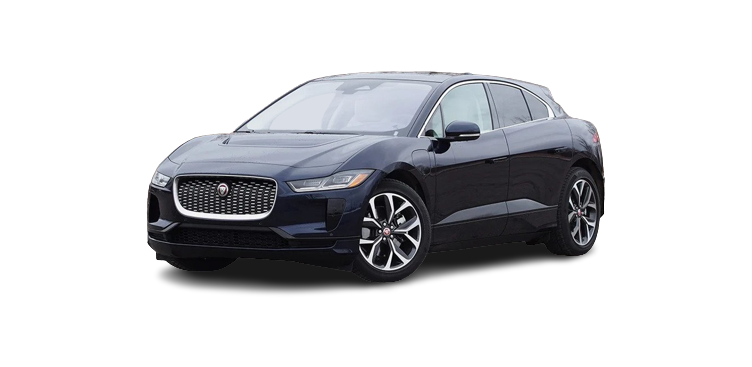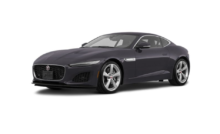2022 Jaguar I-Pace My Electric Vehicle (EV) Owners Manual








MY ELECTRIC VEHICLE (EV)
The (EV) screen displays manual settings for charging the high voltage battery, and shows information about the current charge status. Access the EV via the APPS screen. See APPS SCREEN.
The EV menu screen displays information on the high voltage battery’s charging status and range.
Do not operate the touchscreen controls, or allow the system to distract the driver, while the vehicle is moving. Doing so may potentially lead to an accident, resulting in serious injury or death.
The displayed information consists of:
- Battery current state of charge.
- Vehicle preconditioning provides comfortable cabin temperature at the next departure time. Timed charging preferences can also be set. See VEHICLE PRECONDITIONING SAFETY .
- EV range icon: Indicates the predicted driving distance that the vehicle can travel with the current state of charge of the high voltage battery. See ELECTRIC VEHICLE RANGE PREDICTION.
- Displays the remaining time required to reach 100% charge.
- Settings icon: Accesses the EV Settings menu to adjust features such as creep and regenerative braking settings. See VEHICLE CREEP and REGENERATIVE BRAKING.
- Vehicle charging status is shown in the colored portion of the vehicle graphic:
Green: Vehicle is plugged in and the battery is charging.
Blue: Indicates a Timed charging event is scheduled. Charging is paused to benefit from preferred charging period. See PRECONDITIONING SETTINGS.
Red: Indicates a charging fault. Contact the charge point operator or a retailer or authorized repairer for assistance.
- Charge now: overrides timed charging event(s) to charge the vehicle immediately. See VEHICLE PRECONDITIONING OVERVIEW .
Press the ENERGY icon to access information regarding energy flow into and out of the vehicle’s high voltage battery. The displayed information consists of:
- Energy flow: Blue flows indicate the consumption of electrical energy. Green flows show energy recharging the high voltage battery. Battery recharging occurs during cable charging and also during regenerative braking. See REGENERATIVE BRAKING.
- Range: Indicates the predicted driving distance that the vehicle can travel with the current state of charge of the high voltage battery. See ELECTRIC VEHICLE RANGE PREDICTION.
- Settings icon: Accesses the EV settings menu to adjust creep and regenerative braking settings. VEHICLE CREEP and REGENERATIVE BRAKING.
BATTERY
The Battery tab shows the following information:
- Estimated range based on current charge level. See ELECTRIC VEHICLE RANGE PREDICTION.
- Vehicle graphic showing energy flow: The colored portion represents the proportion of charge held in the high voltage battery. Green indicates energy flowing into the high voltage battery. Blue indicates energy being consumed from the high voltage battery.
- Predicted range: Estimated range based on the set charge level or set charge period.
- Charging complete: Estimated time to reach desired charge level.
- Charging limit: The charge limit can be set depending on operational requirements. See CHARGING LIMIT.
- Current charge level in %.
- Battery tab. The currently selected tab.
- Charging tab. See CHARGING.
CHARGING
Do not operate the touchscreen controls, or allow the system to distract the driver, while the vehicle is moving. Doing so may potentially lead to an accident, resulting in serious injury or death.
The CHARGING menu screen displays information and options for charging the high voltage battery when it is connected to a charging facility. The charge level for the high voltage battery can be set to suit the next journey or the operational requirements before the next charging event.
Select the EV app from the touchscreen. The BATTERY menu screen displays. See APPS SCREEN.
Press the CHARGING tab. The displayed information consists of:
- Immediate charging: Select to start charging to the preset charge level. See CHARGING LIMIT.
- Smart charging: In conjunction with the preconditioning function, Smart Charging allows an off-peak electricity tariff to be used for the charging process. Smart Charging will make sure the vehicle has an optimum level of charge prior to departure. To achieve the optimum level of charge prior to departure, the feature may also charge the vehicle outside of the preferred charging period. See DEPARTURE TIMES.
- Low Cost Hours Only: Allows an off-peak electricity tariff to be used for the charging process. The feature charges the vehicle only within the set charging period and the vehicle is not charged outside of the window. Set a preconditioning event to get benefit of the cabin preconditioning function. See PRECONDITIONING SETTINGS. NOTES
Check low cost tariff timings with your electricity provider. - Set Preconditioning: Configures the preconditioning settings. Preconditioning adjusts the heating and air conditioning settings within the cabin in readiness for a predetermined departure time. See VEHICLE PRECONDITIONING OVERVIEW .
- Information: Further guidance on vehicle Charging settings.
- Energy: Displays the current energy status of the vehicle battery. See ENERGY.
- Battery: Displays range information and estimated time to charging completion.
ENERGY
Do not operate the touchscreen controls, or allow the system to distract the driver, while the vehicle is moving. Doing so may potentially lead to an accident, resulting in serious injury or death.
Swipe left on the CHARGING menu screen to move to the ENERGY menu screen. See CHARGING.
The menu options are as follows:
- Energy flow: Blue flows indicate the consumption of electrical energy. Green flows show energy recharging the high voltage battery.
- Low power mode icon: Touch to select or deselect the low power mode feature. See LOW POWER MODE PERFORMANCE.
- Settings icon: Allows access to the vehicle creep and regenerative braking settings. See VEHICLE CREEP and REGENERATIVE BRAKING.
- Driving range icon: Indicates the predicted driving distance that the vehicle can travel with the current charge level of the high voltage battery. See ELECTRIC VEHICLE RANGE PREDICTION.
LOW POWER MODE
The low power mode feature reduces energy consumption, and can be used when there is a risk of insufficient driving range before reaching a charging station. When low power mode is activated, non-essential features are automatically switched off or adjusted to extend the vehicle’s current driving range. See LOW POWER MODE PERFORMANCE.
Using the ECO driving mode is recommended for extending the vehicle’s driving range in normal driving conditions. See ECO MODE.
To manually select or deselect the low power mode feature, touch the low power mode icon in the EV Settings menu screen. See MY ELECTRIC VEHICLE (EV).
The low power mode icon illuminates to confirm selection.
The low power mode automatically deactivates when a charging event is detected. If the battery has sufficient charge, the low power mode deactivates when the vehicle’s electrical system is switched off and on again.
The vehicle automatically activates the low power mode feature when the charge level for the high voltage battery is very low. The low power mode remains active until the battery is sufficiently charged and the predicted driving range displays greater than 0 miles.
The instrument panel displays a confirmation message and the low power mode icon, to confirm selection. The instrument panel extinguishes the low power mode icon to confirm deselection.
The RANGE IMPACT menu screen also confirms selection of the low power mode. See RANGE IMPACT.
LOW POWER MODE PERFORMANCE
Activation of the low power mode feature automatically switches off and adjusts the following vehicle features:
- The cabin heating and cooling is switched off. NOTES
The fresh air circulation and demisting systems continue to operate.
- The heated seats are switched off.
- The heated steering wheel is switched off.
- The current media source is paused and the sound system is muted.
- The touchscreen is switched off. NOTES
If required, press the touchscreen to switch it on for a limited period of time. - The Head-Up Display (HUD) system is switched off.
- The accelerator pedal is adjusted to limit high rates of acceleration.
- The suspension settings are adjusted for low energy consumption, superseding comfort settings.
Some features can be manually reselected, which overrides the automatic switching off or adjustments.
The availability of some features is dependent on the market and the specification of the vehicle.
Recent Posts
VW Jetta Engine Fuse Box Diagram
Access the comprehensive 2010-2018 VW Jetta Passenger Fuse Box Diagram to troubleshoot electrical issues effectively.…
VW Jetta Passenger Fuse Box Diagram
Explore the comprehensive VW Jetta Passenger Fuse Box Diagram to troubleshoot electrical issues effectively. Understand…
2023 Ford F-150 Lightning Fuse Box Diagram
Under Hood Fuse Box Location Remove the front luggage compartment cover. Under Hood Fuse Box…
2022 Kawasaki NINJA H2 SX SE Brake Lever Adjuster Owner’s Manual
2022 Kawasaki NINJA H2 SX SE Brake Lever Adjuster Owner's Manual NOTICE Only adjust the front…
2023 Land Rover Range Rover Evoque Exiting The Vehicle Owners Manual
2023 Land Rover Range Rover Evoque Exiting The Vehicle SINGLE LOCKING WARNING Before exiting the…
2023 Land Rover Range Rover Evoque Front Seats Owners Manual
2023 Land Rover Range Rover Evoque Front Seats FRONT SEAT SAFETY Make sure to read…
